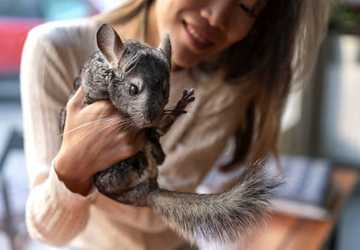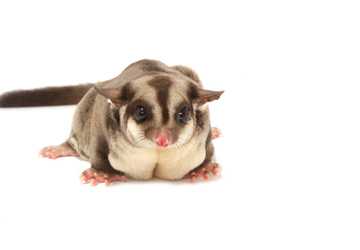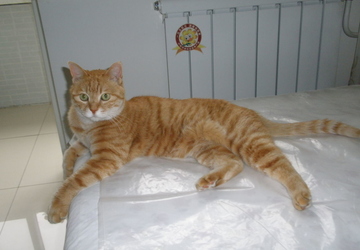Evaluating Personal Circumstances: The First Step in Sugar Glider Adoption Timing

When considering sugar glider adoption timing, the first factor to contemplate is your personal life circumstances. Sugar gliders require a great deal of attention, social interaction, and specialized care, making them not suitable for every lifestyle. If you're going through significant life changes like a new job, a move, or other events that would divert your attention, it may not be the best time for sugar gliders. In contrast, a stable routine can facilitate a more successful bonding process with your new pet, making it an optimal time for adopting gliding marsupials.
Seasonal Considerations: Does Weather Affect the Best Time for Sugar Gliders?
Sugar gliders are native to Australia, Indonesia, and New Guinea, where the climate is relatively stable throughout the year. However, if you're living in a region with significant seasonal fluctuations, you might wonder about the best time for sugar gliders. While they can adapt to different indoor climates, it's crucial to ensure you have the necessary equipment, like heaters or humidifiers, to keep the environment comfortable. The sugar glider adoption timing can be influenced by your readiness to create a stable, climate-controlled habitat.
Financial Preparedness: Budgeting for Adopting Gliding Marsupials
While sugar gliders themselves may not be overly expensive to adopt, the associated costs of care—such as housing, diet, and veterinary bills—can accumulate. When considering sugar glider adoption timing, financial preparedness should not be overlooked. Having a stable income and a dedicated budget for pet care indicates a good time for adopting gliding marsupials.
Availability and Breeding Seasons: Natural Cycles and Sugar Glider Adoption Timing
Sugar gliders breed at various times throughout the year, depending on their geographic location. However, there are peak breeding seasons, generally corresponding to the warmer months. If you are keen on adopting a very young sugar glider, understanding these breeding cycles can influence your sugar glider adoption timing. Availability during these peak months may be higher, offering you a broader selection of sugar gliders to choose from. Nevertheless, it's essential to ensure that any sugar glider you adopt is of appropriate age and has been weaned properly, as premature separation can lead to health and socialization issues.
Research and Education: Foundation for Sugar Glider Adoption Timing
Before diving into the world of adopting gliding marsupials, you should dedicate a substantial amount of time to research and education. Knowledge about their nutritional needs, health issues, and behavioral quirks will provide you with the background needed to care for a sugar glider adequately. Therefore, a good time to consider sugar glider adoption timing is after you’ve taken the time to educate yourself thoroughly. Various resources such as books, online forums, and expert articles can prepare you for this journey. The more you know, the more comfortable you'll be in determining the best time for sugar gliders in your life.
Physical Space: Preparing Your Home for Sugar Gliders
Another critical aspect to consider in sugar glider adoption timing is your living environment. Sugar gliders require ample space to roam, climb, and glide. Assessing your home for suitable areas for a large, well-ventilated cage is a crucial step. If you're planning to move or renovate your home, it might not be the best time for sugar gliders. On the other hand, if you have a stable living environment that can comfortably accommodate the needs of these active and agile creatures, it could indicate that the timing is right for adopting gliding marsupials.
Age and Lifespan: Long-Term Commitment in Adopting Gliding Marsupials

Sugar gliders can live up to 12–15 years in captivity when well cared for. This lifespan implies that adopting a sugar glider is a long-term commitment. If you are at a life stage where you can foresee a stable environment for the next decade or more, this could be the best time for sugar gliders in your life. Age and lifestyle factors, therefore, play a significant role in determining optimal sugar glider adoption timing.
Veterinary Accessibility: Health Support for Sugar Gliders
Another angle to consider is the availability of specialized veterinary care for exotic pets like sugar gliders. Not all veterinarians are equipped to handle the unique health needs of these gliding marsupials. Therefore, it is wise to identify local vets with the required expertise and consult them to understand the potential health needs and risks. Having this support network in place can be a green flag for sugar glider adoption timing.
Emotional Readiness: The Intangible Aspect of Sugar Glider Adoption Timing
Last but certainly not least, emotional readiness is a somewhat intangible but incredibly important factor. Sugar gliders are social and bond deeply with their caregivers. They thrive on interaction and can become stressed or depressed if neglected. Thus, feeling emotionally ready to invest in building a bond with your pet indicates a good sugar glider adoption timing.
Social Dynamics: An Overlooked Factor in the Best Time for Sugar Gliders
Sugar gliders are social animals, often living in colonies in the wild. When considering sugar glider adoption timing, it's worthwhile to think about the social dynamics of any existing pets you may have. Introducing a sugar glider into a home with other animals requires careful planning and gradual introduction. If you already own a sugar glider and are considering adding another to your family, the best time for sugar gliders would be when your existing pet is well-adjusted and open to socializing with a new companion.
In conclusion, sugar glider adoption timing is not a one-size-fits-all concept but rather a culmination of various factors like personal readiness, seasonal considerations, financial stability, and social dynamics. Each of these factors contributes to determining the best time for sugar gliders in your unique situation. By considering all these aspects, you'll be better prepared for the responsibilities and joys of adopting gliding marsupials, making the transition smoother for both you and your new furry friend.

















